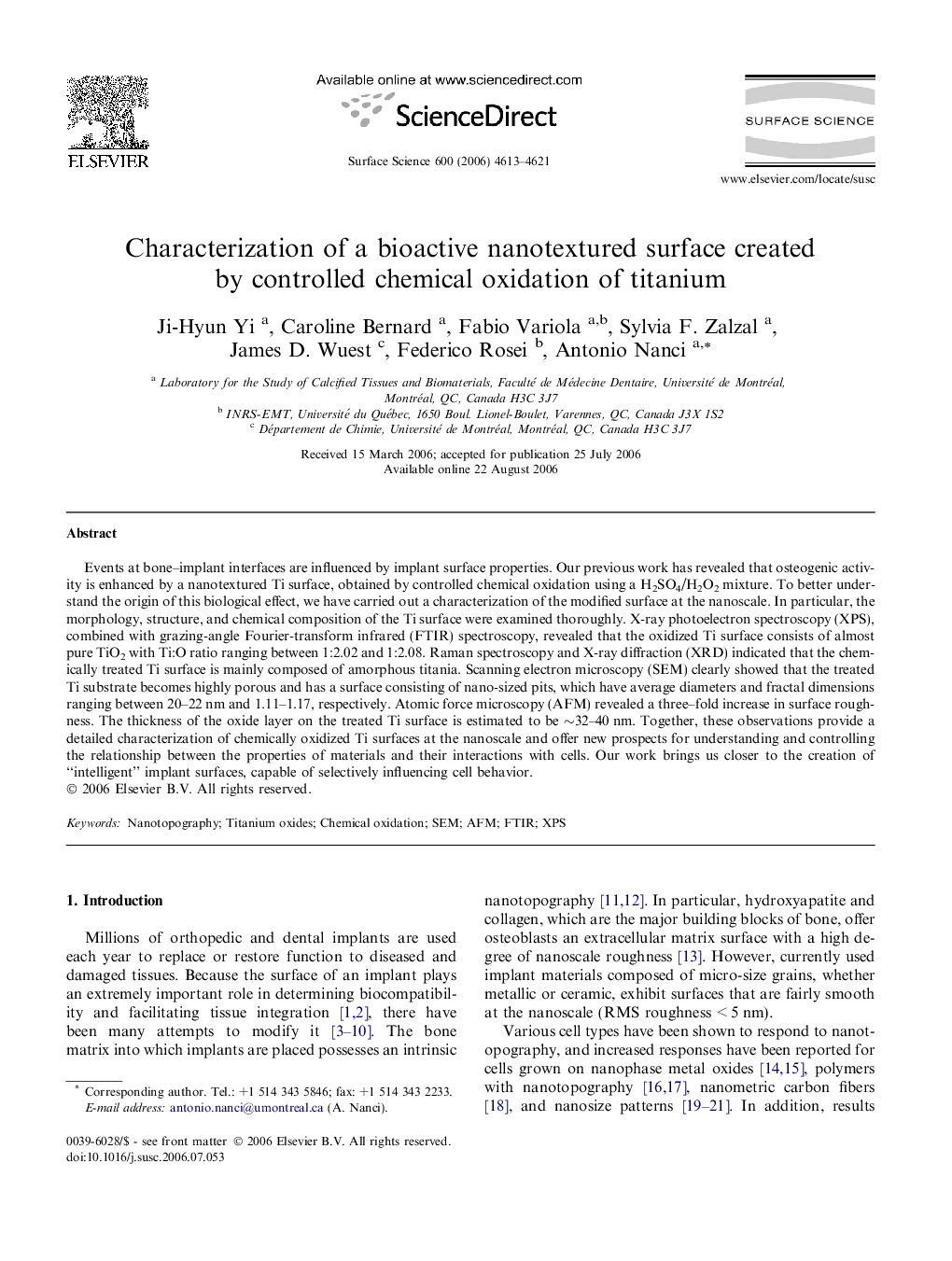| Article ID | Journal | Published Year | Pages | File Type |
|---|---|---|---|---|
| 5425264 | Surface Science | 2006 | 9 Pages |
Abstract
Events at bone-implant interfaces are influenced by implant surface properties. Our previous work has revealed that osteogenic activity is enhanced by a nanotextured Ti surface, obtained by controlled chemical oxidation using a H2SO4/H2O2 mixture. To better understand the origin of this biological effect, we have carried out a characterization of the modified surface at the nanoscale. In particular, the morphology, structure, and chemical composition of the Ti surface were examined thoroughly. X-ray photoelectron spectroscopy (XPS), combined with grazing-angle Fourier-transform infrared (FTIR) spectroscopy, revealed that the oxidized Ti surface consists of almost pure TiO2 with Ti:O ratio ranging between 1:2.02 and 1:2.08. Raman spectroscopy and X-ray diffraction (XRD) indicated that the chemically treated Ti surface is mainly composed of amorphous titania. Scanning electron microscopy (SEM) clearly showed that the treated Ti substrate becomes highly porous and has a surface consisting of nano-sized pits, which have average diameters and fractal dimensions ranging between 20-22Â nm and 1.11-1.17, respectively. Atomic force microscopy (AFM) revealed a three-fold increase in surface roughness. The thickness of the oxide layer on the treated Ti surface is estimated to be â¼32-40Â nm. Together, these observations provide a detailed characterization of chemically oxidized Ti surfaces at the nanoscale and offer new prospects for understanding and controlling the relationship between the properties of materials and their interactions with cells. Our work brings us closer to the creation of “intelligent” implant surfaces, capable of selectively influencing cell behavior.
Related Topics
Physical Sciences and Engineering
Chemistry
Physical and Theoretical Chemistry
Authors
Ji-Hyun Yi, Caroline Bernard, Fabio Variola, Sylvia F. Zalzal, James D. Wuest, Federico Rosei, Antonio Nanci,
